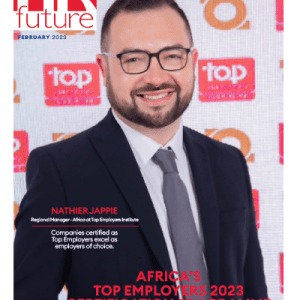There’s no denying the rise of freelancing in today’s business landscape. It’s now easy to witness freelancers working for various companies across different industries. See those on-call professionals on a part-time job or those working from home (WFH) with a flexible schedule?
The gig economy is the industry for independent contractors working for businesses worldwide. But unlike full-time, permanent employees, these freelancers only fill temporary roles and/or part-time positions. If there’s anything disruptive about this industry, it’s that it defines the future of work.
According to Business Research Insights, the global gig economy market could grow from $556.7 billion in 2024 to $1,847 billion by 2032 at a 16.18% compound annual growth rate (CAGR). The industry includes segments such as asset-sharing, transportation-based, professional services, and household & miscellaneous services (HGHM).
It’s best to welcome professionals from the gig economy to your organization. That lets you hire the best talent while accessing specialized skills and saving money. But as a human resources (HR) professional, how do you integrate these freelancers into your labor workforce?
Read on and follow the crucial steps below.
1. Know the freelancer’s benefits by heart
Companies hire gig economy professionals due to potential benefits, such as cost-effectiveness, specialized skill access, and more. But on the flip side, it’s crucial to understand the benefits of freelancers. That way, you can align their professional goals with your business needs, thereby maximizing their full potential.
Brooke Webber, Head of Marketing at Ninja Patches, highlights the value of freelancing. She believes it benefits both the freelancers and employers in various ways. “Freelancing is a win-win. Businesses get access to top talent on demand, and freelancers enjoy the freedom to work on their own terms. It’s all about flexibility, growth, and creating value for both sides.”
Below are the potential benefits of freelancing for workers:
- Remote work: Freelancers can work from anywhere, giving them full location flexibility.
- Flexible hours: They set their own schedule and work at their preferred times.
- Multiple clients/projects: They can take on different jobs to diversify their income and experience.
- High-income potential: Their earnings depend on their skills, rates, and client demand. The World Economic Forum cites the four segments of the gig economy in terms of income:
- Work-life balance: They can structure work around their personal life for better well-being.
- Global opportunities: They can collaborate with clients worldwide without relocating.
- Skills growth: Every project helps them learn, improve, and expand their expertise.
2. Set clear roles and expectations
Freelancers might not be your full-time employees whose day-to-day functions are set in stone. However, they tackle specific tasks critical to your business operations, whether web development, content creation, or graphic designing. Therefore, it’s crucial to define their roles and expectations as clearly as possible. Here’s how:
- Clear job descriptions: Define roles and responsibilities from the start.
- Set expectations: Be transparent about the company and job requirements.
- Align with business goals: Ensure their work supports overall objectives.
- Task clarity: Outline specific tasks they need to complete regularly.
- Freelancer vs. in-house roles: Clearly differentiate freelance and in-house team responsibilities for a blended workforce.
Webber also suggests setting clear goals and expectations for freelancers the way you do for your regular employees. “Freelancers thrive when they know exactly what’s expected of them—just like your in-house team. Clear roles, goals, and communication set everyone up for success.”
3. Make hiring and onboarding smooth
Streamlining your hiring and onboarding process is the key to a successful venture into the gig economy. This means two things: hiring the right talent and making the first onboarding experience welcoming. Doing so sets the stage for solid partnerships between you and your newly hired freelancers.
Jeffrey Zhou, CEO and Founder of Fig Loans, emphasizes the need for critical recruitment and a streamlined onboarding process. “Finding the right freelancers is just the first step—how you onboard them makes all the difference. A smooth hiring and onboarding process builds trust, sets clear expectations, and paves the way for long-term success.”
- Robust applicant search: Find top freelancers through job platforms, agencies, or referrals.
- Proper resume filter: Use an applicant tracking system (ATS) to screen and shortlist candidates while recruiters double-check. About 99% of Fortune 500 companies leverage an ATS in recruitment.
- Effective job interviews: Ask the right questions to assess skills, experience, and fit.
- Critical candidate selection: Choose freelancers based on expertise, reliability, and project needs.
- Seamless onboarding process: Set clear guidelines and communication channels for a smooth start.
4. Manage freelancers the right way
Now that you’ve successfully hired and onboarded freelancers, it’s time to kick off their day-to-day functions. That’s when the real deal begins—managing workers in the gig economy effectively and efficiently. How can you keep them motivated, engaged, and productive for successful partnerships? Here’s how:
- Constant communication: Stay connected through regular check-ins or team meetings.
- Clear task deadlines: Set clear deadlines to keep projects on track.
- Key metrics: Use key performance indicators (KPIs) to measure freelancer performance effectively.
- Performance monitoring: Track progress without micromanaging.
- Technology leverage: Use digital tools to streamline collaboration and communication.
In addition, Jeffrey Zhou cites a strategic management approach to freelancers. He mentions that a line is drawn between managing full-time and part-time employees. “Managing freelancers isn’t about control—it’s about clarity, communication, and trust. Set clear goals, use the right tools, and give them the space to deliver great work.”
5. Pay fairly and stay compliant
Another key factor in maximizing the gig economy is ensuring legal compliance, particularly concerning the payment model. Most freelancers capitalize on the monetary value freelancing offers despite the lack of other benefits like health insurance. To make them valuable assets to your organization, provide them with what they deserve.
Peter Čuček, Owner of Tuuli, recommends fair compensation and legal compliance. “Freelancers deliver real value, so paying them fairly and on time isn’t just good practice—it’s essential. Clear contracts and legal compliance build trust and long-term partnerships.”
- Contract agreements: Set, review, and honor contracts with freelancers.
- Payment structure: Agree on hourly or per-project payment terms.
- Timely payments: Pay on time and provide clear invoices.
- Tax compliance: Understand and follow freelancer tax requirements.
- Legal matters: Ensure compliance with data privacy, confidentiality, and intellectual property (IP) rights.
6. Keep good freelancers around
Freelancers might not be your full-time employees. However, it’s essential to build long-term relationships with freelancers. That way, you can maximize their potential for business growth and success. Likewise, you can easily and quickly tap into these talents whenever your business needs arise.
Here’s how you can foster good relationships with freelancers:
- Freelancer talent pool: Build a pool of freelancers for future business needs. Likewise, incorporate diversity, equity, and inclusion (DEI) into your daily workflows.
- Reward and recognition: Recognize and reward top freelancers to keep them engaged. Gallup cites employee recognition as one of the best ways to inspire and engage employees.
- Constant communication: Keep open lines of communication for better collaboration.
- Feedback loop: Collect feedback and take action to improve processes.
- Brand loyalty: Foster loyalty and advocacy among freelancers.
Čuček also suggests treating freelancers like your regular employees. “Freelancers may not be on your payroll full-time, but they’re a vital part of your team. Treat them with the same respect, recognition, and support you give your in-house employees, and they’ll stick around for the long haul.”
The gig economy is on the rise—continuously thriving and booming. Freelancers will continue infiltrating various industries, and employers will capitalize on their value. It’s safe to say that this industry is redefining and reshaping the future of work.
As an HR professional, consider welcoming freelancers into your company or organization. However, follow the crucial steps above to integrate them into your labor workforce. By doing so, you can maximize their potential for employee and business success—a win-win for both parties!
Guest writer





























